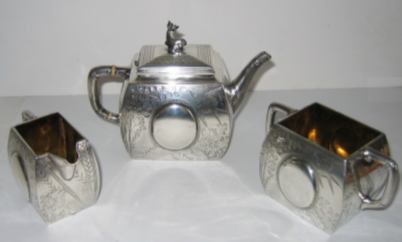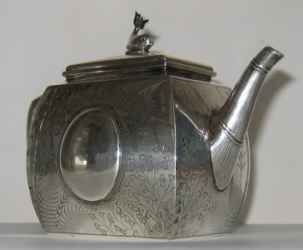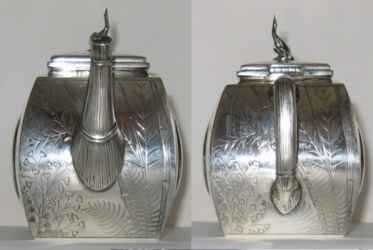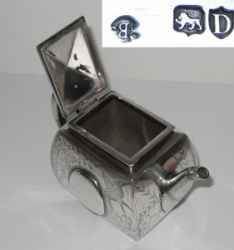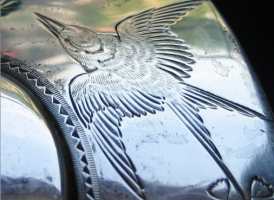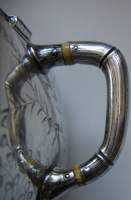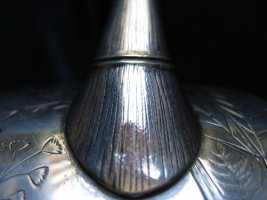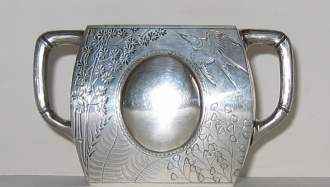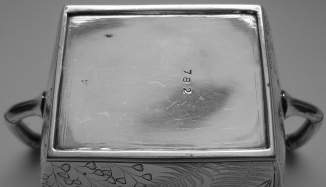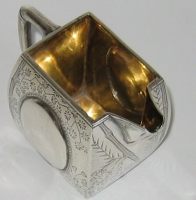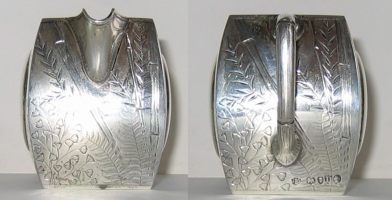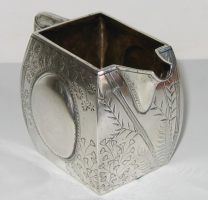
ASSOCIATION OF SMALL COLLECTORS OF ANTIQUE SILVER
ASCAS
| Members' Window # 104 |
|
|
(click on images to enlarge)A "JAPANESE" STYLE BACHELOR TEA SETThe Aesthetic Movement, like the Art Nouveau, found its roots in the reaction to the Industrial Revolution in England in the middle of the 19th century and emphasized art in the production of furniture, metalwork, ceramics, stained glass, textiles, wallpapers, and books. It was related to other movements such as symbolism or decadence represented in France, or decadentismo represented in Italy, and may be considered the British version of the same styles. This style is considered practically abandoned by 1901, at the sunset the great success of Oscar Wilde.The major artistic expression of the Aesthetic Movement on silver artifacts can be found in works by Tiffany and Co. in USA, mainly where silver was combined with copper and others metals. No similar examples occurred In Great Britain, because the only metal that could be used together with silver was gold.The naturalistic design of this set includes many of the typical "Japanese" decorations: flowers, birds, ginkgo leaves and peacock feathers. Apart from design and decoration this tea set contains other features connected to the Aesthetic Movement. In particular it was manufactured using a manual technique (the seaming) in a period where the contribution of machine for manufacturing silverware was the rule.Dimension and weight:
|
- 2013 - |
